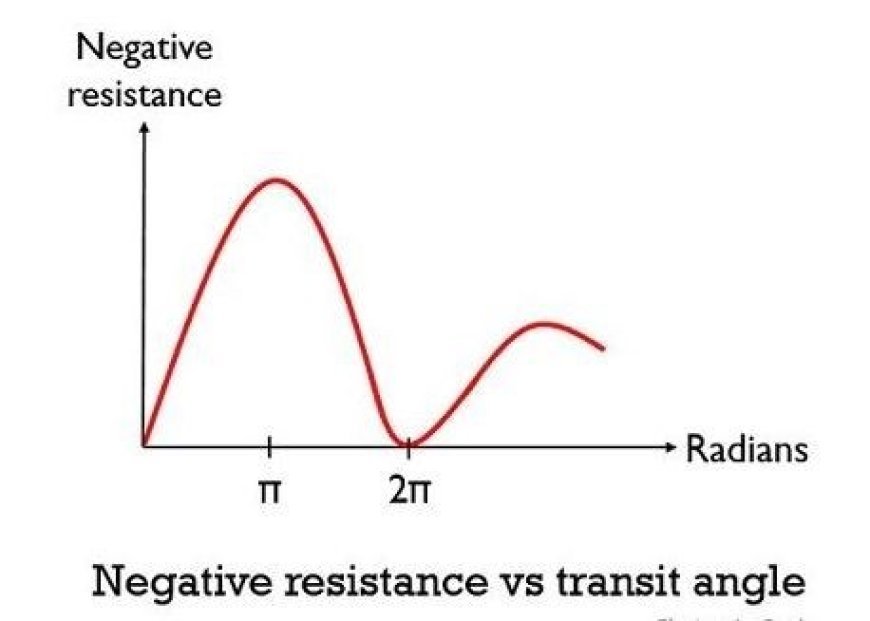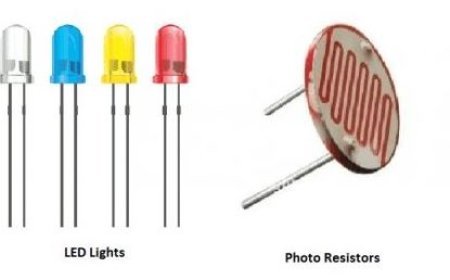IMPATT DIODE
IMPATT diode: High-power microwave generator using impact ionization for negative resistance.

- PATT stands for Impact Ionization Avalanche Transit Time. The IMPATT diode is an extremely high-power semiconductor device used in microwave applications.
- At microwave frequencies, it primarily serves as an oscillator and amplifier.
- The IMPATT diode has an operational frequency range of 3 to 100 GHz.
- It has a negative resistance characteristic and, hence, functions as an oscillator to produce signals at microwave frequencies. It is a reverse-biased diode that operates on the Avalanche condition.
Construction
The following diagram depicts the construction of the IMPATT diode:
- As we can see, it is divided into four regions: P+-N-I-N+.
- The IMPATT diode has a structure that is comparable to the PIN diode. It does, however, create avalanche current by operating on a very high voltage gradient of roughly 400 kV/cm.
- Materials such as GaAs, Si, Ge, or InP are commonly utilized in its construction. GaAs, on the other hand, is chosen due to its low noise behaviour.
- It has a somewhat different structure than a standard diode. We know that a conventional PN junction diode fails in an avalanche. Because the creation of a high quantity of current generates heat within it,.
- RF waves in microwave bands are made by changing the way things are built.
- As a result, structural variation is used to generate RF signals at microwave frequencies.
Working of the IMPATT Diode
- As previously stated, these diodes function on the avalanche breakdown and transit time delay principles.
- So, initially, let's define the avalanche condition (breakdown).
- It is known that avalanche breakdown happens when something causes the junction current in a reverse-biased PN junction diode to rise quickly, which leads to junction breakdown.
- We know that when the depletion region is reverse biased, it gets extraordinarily thick. As a result, only small carriers pass through the junction. The mobile charge carriers travel faster in the presence of a strong electric field.
- The high-velocity carriers clash with other atoms in the crystal and form electron-hole pairs as they proceed. This results in the proliferation of charge carriers inside the crystal structure.
- As a result, the moving charges create a lot of current inside the gadget. This is used in IMPATT diodes and is called avalanche state or impact ionization.
- This is referred to as the avalanche condition or impact ionization, and it is used in IMPATT diodes.
- It is important to remember that the diode's total external field is made up of the RF AC signal and the DC voltage.
- It should be remembered that the overall external field supplied to the diode is the sum of the RF ac signal and the dc voltage.
- When the ac voltage is zero, a very small amount of current passes through the diode due to the very low dc voltage. This current is commonly referred to as the pre-breakdown current.
- However, as the applied potential grows, so does the electric field inside the diode. And, as previously stated, an increase in the electric field will result in an increase in the number of electron-hole pairs created owing to impact ionization.
The diagram above clearly depicts the avalanche zone and drift space in the diode construction.
- When the superimposed ac field and dc potential grow, electrons in the p+ area are injected into the I region and drift towards the n+ region. This is because when the applied field increases, electrons migrate towards the anode and holes towards the cathode.
- In the presence of a strong electric field, moving electrons produce charge multiplication.
- By this time, the ac field is nearing zero, but due to secondary charge production, the electron concentration in the avalanche zone is extraordinarily high. This shows that there is now a 90° phase shift between the AC input signal and the charge carrier concentration in the avalanche region.
- This demonstrates that a phase shift of 900 is now formed between the alternating current input signal and the concentration of charge carriers in the avalanche area.
- So, as the electrons move from the avalanche region to the anode, they create a large current with a phase that is the opposite of the ac signal that is being applied.
- As the electrons migrate from the avalanche area to the anode, they create a strong current with a phase opposite to that of the supplied ac signal.
- Even if the DC potential is strong during the negative half of the ac signal, the drop in the total electric field will induce a decline in the concentration of carriers present in the avalanche zone. As a result, the current running through it is diminished.
- The thickness of the drift area must be carefully adjusted in order to achieve the necessary phase shift between the ac signal and diode current.
- The drift region's thickness must be such that the electron bunch is gathered at the anode until the ac voltage approaches zero. As a result, a phase shift of 900 was achieved. This is due to the fact that the thickness of the drift area determines how long it takes the carriers to reach the appropriate electrode.
- Despite the fact that all carriers travel an uneven distance when reaching the electrode, negative resistance, however, is a result of the phase change that drifting causes.
- However, the added phase shift as a result of drifting causes negative resistance.
- The graph below depicts the negative resistance characteristic of an IMPATT diode in relation to the transit angle: As a result, current is created through an IMPATT diode.
What's Your Reaction?



































